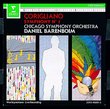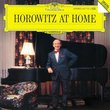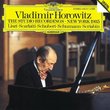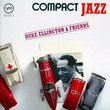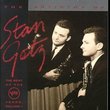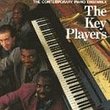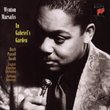| All Artists: Igor Stravinsky, Michael Tilson Thomas, London Symphony Orchestra Title: Stravinsky in America Members Wishing: 0 Total Copies: 0 Label: RCA / BMG Release Date: 9/16/1997 Genre: Classical Styles: Opera & Classical Vocal, Ballets & Dances, Ballets, Dances, Chamber Music, Forms & Genres, Concertos, Historical Periods, Modern, 20th, & 21st Century Number of Discs: 1 SwapaCD Credits: 1 UPC: 090266886524 |
Search - Igor Stravinsky, Michael Tilson Thomas, London Symphony Orchestra :: Stravinsky in America
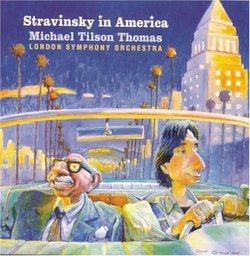 | Igor Stravinsky, Michael Tilson Thomas, London Symphony Orchestra Stravinsky in America Genre: Classical
A fascinating compilation of works, both major and minor, that illustrate Stravinsky's genius interacting with an America far from his Russian roots and Parisian inclinations. Included are pieces as dizzyingly varied as ar... more » |
Larger Image |
CD DetailsSynopsis
Amazon.com essential recording A fascinating compilation of works, both major and minor, that illustrate Stravinsky's genius interacting with an America far from his Russian roots and Parisian inclinations. Included are pieces as dizzyingly varied as arrangements of our national anthem and "Happy Birthday" to the hermetic, atonal Huxley Variations. Michael Tilson Thomas excels in all of them, conveying the immense stature as well as the icy wit of the all-too-rarely heard Agon, the raucous humor of the Circus Polka, and the jewel-like precision of the Variations. Throughout, MTT captures Stravinsky's biting rhythms and imparts an austere beauty to works such as the Variations that seem, in other hands, simply austere. He benefits from an impressive sound that reveals every detail. One of the conductor's finest discs, and essential for anyone interested in 20th-century music. --Dan Davis Similarly Requested CDs
|
CD ReviewsAn essential introduction to later Stravinsky Keith Peters | 06/14/2000 (5 out of 5 stars) "Normally, I am not a fan of Michael Tilson Thomas' conducting, but this disc is truly wonderful. It provides the listener with a great introduction to the music that Stravinsky composed from 1941 up to his last purely orchestral work, the Variations in 1965. Among the gems found here, the Ode, the Scherzo a la Russe(sounding a lot like Petrouchka)Scenes de Ballet and Agon. And best of all, it shows that Stravinsky didn't dry up, as many think. A definite desert island disc." FINALLY! A great and easily available recording of Agon! D. Chiapello | Phoenix, AZ United States | 03/19/2003 (5 out of 5 stars) "Although I agree wholeheartedly with the other reviewers about the overall quality of this disc, its special value to me is for the recording of Agon. Recordings of this score have always been hard to find. This is the first CD Agon that I have enjoyed (having listened to previous recordings by the NYC Ballet Orchestra and a performance conducted by Mavrinsky). I could not ask for more. The detail and tempos seem very close to Stravinsky's own recording with the Los Angeles Philharmonic. My only complaint is that no snacking on favorite parts is allowed; the whole score is allotted one band. To my mind, Agon should be every bit as popular as, say, the Symphony of Psalms. The range of moods, textures and orchestral color is extraordinary. The work also has great wit, including one dance scored in comical imitation of an antique chamber ensemble." A winning concept, but MTT is a little slack Santa Fe Listener | Santa Fe, NM USA | 01/08/2009 (4 out of 5 stars) "The cover art for this CD is so charming that I feel a bit guilty criticizing the contents. It was a clever idea to sample Stravinsky's American output, which moved sharplyy from neo-classical style to Schoenbergian atonality. As a pivot we get Agon (1957), the major work on this CD, which sounds like Stravinsky from beginning to end but is deeply influenced by the 12-tone system. Agon isn't an easy listen, although it helps to have seen the ballet so that you can identify a visual with each of the ballet's 17 sections.
MTT's reading is at odds with the composer's own on Sony. Instead of being angular, spare, and acerbic, it is soft-grained and mellifluous. There's room for any number of approaches to such protean music, but MTT's account feels undernourished to me -- it needs more drive and less perky filigree. To make Agon sound like great music, you must feel that it's great to begin with. MTT is most at home with the elegance of Scenes de ballet (1844), the second longest work on the album. Stravinsky, like Schoenberg, wanted to break into American pop culture, and Scenes was tailored for Billy Rose, impressario of the Aqucades water ballet, who wanted to make a splash in high culture with a revue called The Seven Lively Arts. Rose actually liked Stravinsky's score, and its tidy, melodicious neo-classical idiom goes down easily. Stravinsky wrote in short form more than any other modern composer, and the rest of the program is filled out with eight tasty morsels, inclduing an arrangment of the Star Spangled Banner and a Circu Polka for Barnum & Bailey's dancing elephants. The last morsel, the Variations written in the memory of Aldous Huxley, is couched in the composer's msot difficut, terse late style, so I guess it isn't fair to call it tasty. But as a whole this CD certainly is, assuming you don't insist on a more pointed, acerbic style overall." |

 Track Listings (10) - Disc #1
Track Listings (10) - Disc #1